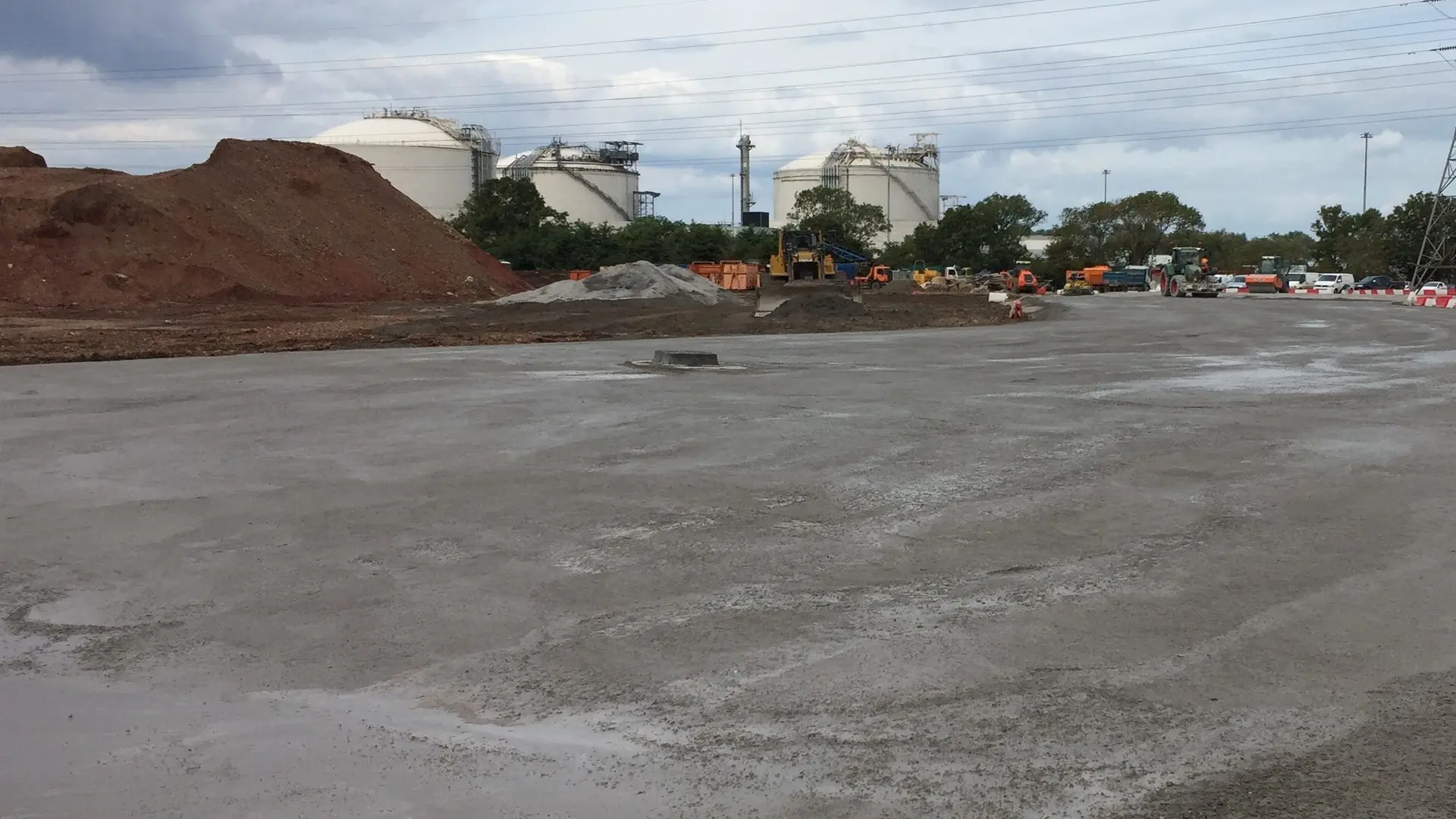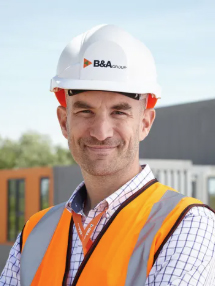
Soil stabilisation is a proven method of improving soil properties by adding a wide-range of binder materials into it. Binders are selected to meet design criteria for the particular application such as land raising, redevelopment of a contaminated site or reuse of waste as aggregate in construction.
Stabilising soil with binders is a cost effective method for converting soils into a construction medium, stabilising contaminants in brownfield sites or to provide a stronger engineered material to be built upon.
Soil Stabilisation in Bristol and the South West
Here at B&A Group our team of experienced, qualified specialists will work with you to advise the best solution for your project requirements.
Call us now on 0117 453 9779 and select option 2 to discuss your soil stabilisation requirements
What Is Soil Stabilisation?
Soil stabilisation may be used on its own or in combination with other risk management approaches as part of a remedial strategy to address the pollutant linkages that need to be managed. These methods involve the use of stabilising agents in soils to improve its geotechnical properties such as compressibility, strength, permeability, and durability.
Soil stabilisation is a method of altering or modifying soil properties to improve the engineering characteristics and performance of soil. The process includes the mixing of soil, cementing material, or other chemical materials that are added to natural soil to improve one or more of its properties. It can also be done by mechanically mixing stabilising agents and natural soil together so as to achieve a homogeneous mixture or by adding stabilising material to the soil deposit.
Soil stabilisation is used to improve the properties of road base soil. These agents can improve and maintain soil moisture content, increase soil particle cohesion, and acts as cementing and waterproofing agents.
Methods of soil stabilisation used:
- Mechanical Stabilisation
- Lime Stabilisation
- Cement Stabilisation
- Fly ash Stabilisation
- Stabilization by Geotextile and Fabrics
Key environmental and operational benefits of soil stabilisation
- Reuse of existing site won materials, providing a sustainable solution that reduces costs to the environment in terms of lorry movements, plant usage and the import of replacement alternative materials
- Production of a long-lasting, engineered and structurally stable material that has been proven to be long lasting
- Reduction of programme duration by reducing the number of subsequent mechanical operations
- Making the reuse of brownfield sites commercially viable and providing an alternative to building on greenfield land
- Binder selection ranging from traditional cement or lime binders to more sustainable by-products from other industries.
Where have B&A Group used soil stabilisation?
- Creation of working platforms in waterlogged soils during the winter period
- Design and construction of piling mats
- To lock mobile contaminants on brownfield sites
- Construction of temporary haul roads and storage areas
- Preparation of sub-grades for car parks and areas of hard landscaping
Our Accreditations
- QP Qualified Persons with CL:AIRE,
- B&A Corporate membership of CL:AIRE (Contaminated Land : Applications in Real Environments).
- Qualified staff with a range of Scientific and Environmental qualifications and charterships including BSc, MSci, PhD, CSci, CIWM, Level 4 WAMITAB
- CPCS and NPORS trained plant operatives
- CSCS Supervisors
- SSSTS and SMSTS trained supervisors and managers
- UKATA Asbestos trained



